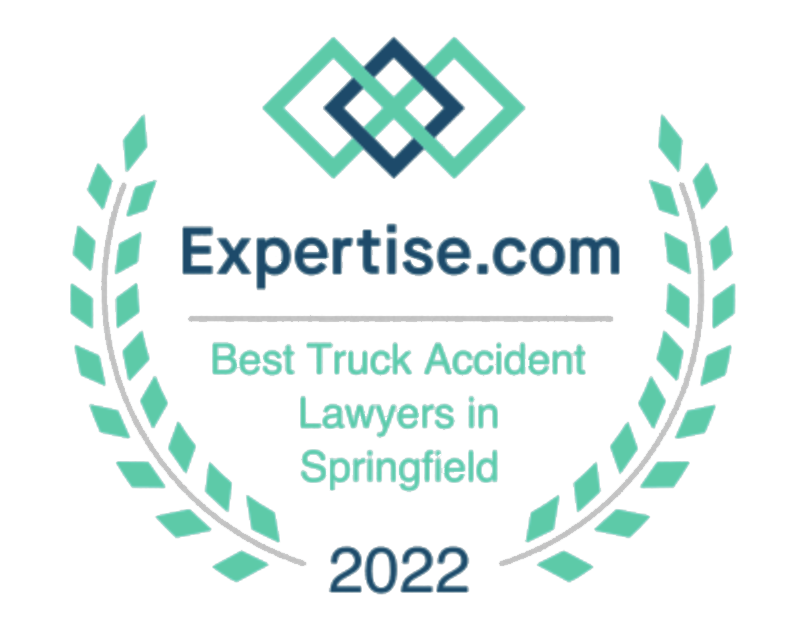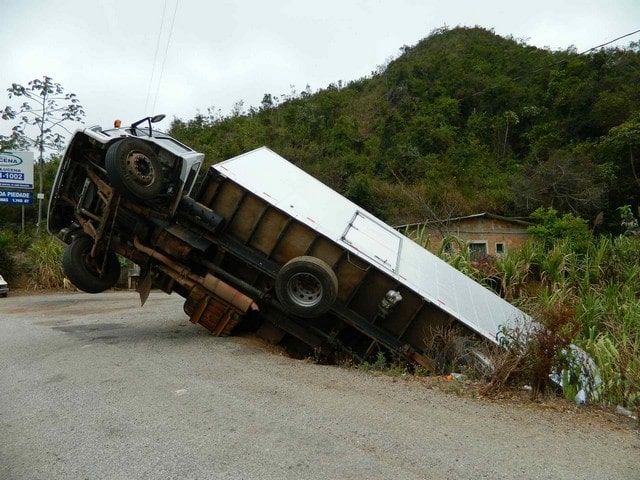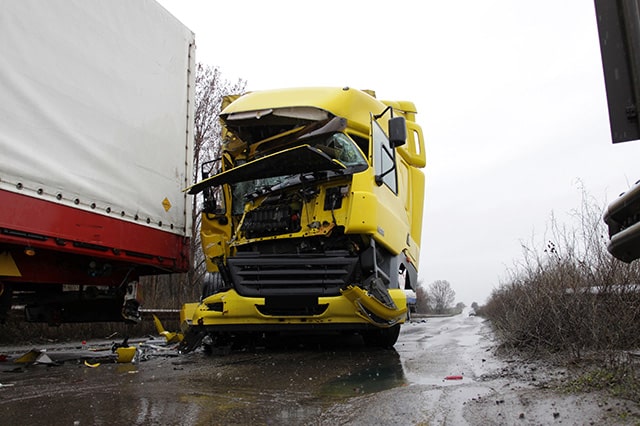








Navigating the chaos of multi-vehicle truck accidents is no small feat. Due to their complex nature and the sheer potential for devastation, such incidents pose a significant threat. Multi-vehicle truck accidents involve three or more vehicles and often occur on busy highways. They can be initiated by a single mistake, creating chain reactions or pile-ups involving multiple vehicles. These incidents are typically severe due to the size and mass of trucks, which can cause extensive damage and injury.
According to the National Safety Council, in 2022, over 5,800 large trucks were involved in fatal crashes, a 49% increase over the last decade. Such incidents highlight the critical importance of addressing and understanding these types of collisions to prevent future tragedies.
Common Causes Of Multi-Vehicle Truck Accidents
Several factors contribute to multi-vehicle truck accidents. Speeding, distracted driving, and driver tiredness are common behavioral issues that can easily lead to accidents. Bad weather conditions, for example, fog or heavy rain make the roads treacherous and unpredictable.
Furthermore, mechanical failures such as brake malfunctions and improper vehicle maintenance amplify the risks. Trucking companies are crucial in ensuring safety by adhering to strict traffic laws and cargo regulations.
Improperly loaded or loosely secured cargo can lead to serious accidents. Failing to follow safety rules makes these risks even worse. Under the FMCSA Cargo Securement Rules (49 CFR § 393.100-136), unsecured cargo can shift during transport, causing vehicle instability, rollovers, or lost loads. These issues significantly increase the chances of a crash.
Keeping trucks in proper condition and following safety guidelines are key to preventing these life-threatening collisions.
Determining Liability In Multi-Vehicle Truck Accidents
Accidents involving multiple trucks and vehicles are inherently complex. Determining liability often involves carefully assessing various elements, ranging from evidence collection to legal challenges, that can impact compensation and claims. When assessing liability in multi-vehicle truck accidents, several crucial aspects are involved. These include:
Police Reports: Police reports offer initial insights into the accident scene, while accident reconstruction experts provide detailed analyses of how the crash occurred.
Driver Logs: Truck driver logs and compliance with federal trucking regulations are essential in determining if a driver followed safety rules or was fatigued. The FMCSA Hours of Service (HOS) regulations (49 CFR § 395) set strict limits to prevent accidents caused by fatigue. For instance, property-carrying drivers can drive up to 11 hours after embarking on 10 consecutive hours off duty and must take a 30-minute break after driving for 8 hours. Reviewing these logs can help identify if the driver violated HOS rules, contributing to fatigue and possibly causing the accident.
Truck’s Black Box: Additionally, data from a truck’s black box can furnish critical information, including speed and braking patterns before the crash. This data helps in analyzing the incident’s dynamics.
Understanding these factors, alongside necessary trucking regulations, aids in constructing a clear picture of fault and negligence.
Unlike regular car accidents, multi-truck collisions include overlapping insurance policies, commercial liability coverage, and federal trucking regulations. Insurers may use policy loopholes, argue over liability percentages, or claim contributory negligence to reduce payouts. Successfully handling these challenges requires a strong legal approach supported by clear evidence such as black box data, dashcam footage, accident reports, and compliance with FMCSA regulations.
Proving Negligence Across Multiple Parties
In multi-vehicle incidents, pinpointing specific negligence presents a formidable task. With numerous parties involved, it’s necessary to prove each one’s specific degree of fault.
Negligence must be determined between truck drivers, other motorists, and potential manufacturers. This requires extensive evidence collection, including maintenance records and driver backgrounds.
In Missouri, for instance, the law (RSMo § 537.765) cuts down a plaintiff’s recovery by the percentage of fault assigned to them. Since Missouri follows a pure comparative fault rule, a plaintiff can still get damages even if they are more than 50% at fault. On the other hand, some states use a modified comparative fault rule, which prevents a plaintiff from recovering any damages if their fault exceeds a certain threshold, usually 50% or 51%.
Witness testimonies, professional analysis, and black box data are essential in meticulously building a case to establish negligence.
Complex Federal And State Laws
Understanding federal trucking regulations and state liability laws is essential in truck accident cases because violations can affect decisions about fault and compensation. The Federal Motor Carrier Safety Administration (FMCSA) enforces specific rules for commercial trucking, including driver hours and vehicle maintenance.
- Hours of Service (HOS) Rules (49 CFR Part 395): These rules limit how many hours a truck driver can operate within a specific timeframe to prevent fatigue-related accidents. For instance, property-carrying drivers can drive at least 11 hours after taking 10 consecutive hours off duty. If drivers exceed these limits, they may be considered negligent, which could increase their liability in an accident.
- Vehicle Maintenance Rules (49 CFR Part 396): Trucking companies and drivers must regularly inspect, repair, and maintain their vehicles to ensure safety. Neglecting essential upkeep, such as brakes, tires, or steering systems, can lead to mechanical failures and serious accidents. Failure to follow these rules can be strong evidence of negligence.
Compliance with these regulations can build a stronger case when determining liability in truck accidents.
Navigating Insurance and Legal Challenges
Insurance companies often try to minimize or deny claims by unfairly blaming truck drivers. We push back by negotiating with insurers, challenging unfair liability claims, and ensuring compliance with federal safety laws. Our team thoroughly examines all evidence, including accident reports, Hours of Service (HOS) logs, black box data, and driver records, to uncover the truth and hold the proper parties accountable.
Building a Strong Case with Expert Support
We work with accident reconstruction specialists, medical professionals, and industry experts to strengthen your case. Whether it’s analyzing skid marks, vehicle damage, or recreating the accident, we ensure every detail is covered. We aim to secure maximum compensation for your medical bills, lost wages, and pain and suffering.
Personalized Representation for Injured Truck Drivers
At Hurt Trucker Attorneys, we know that every case is different. We offer personalized legal strategies tailored to your specific needs. We collaborate with medical professionals to document injuries and long-term treatment costs, building a strong case for full compensation. Our commitment is to help injured truck drivers rebuild their lives after serious accidents.
If you’re a truck driver injured in an accident, we’re here to fight for your rights. Let us handle the legal and insurance complexities so you can focus on your recovery.
Contact Hurt Trucker Attorneys
Truck accidents can be incredibly confusing and challenging. Where do you begin facing a legal maze after a crash? With over 50 years of experience, our firm, Hurt Trucker Attorneys, is here to guide you. Our focus on personal injury means we concentrate on the issues that matter most to you—your health, livelihood, and peace of mind.
Dealing with the aftermath of an accident can feel overwhelming. You face physical and emotional tolls, and the financial burden can add stress.
Our team is ready to help. We invite you to schedule a consultation. We’ll provide personalized assistance tailored to your needs and circumstances during this session.
Contact us today for a free case evaluation. We’re here to help you navigate this difficult time confidently and carelessly.




